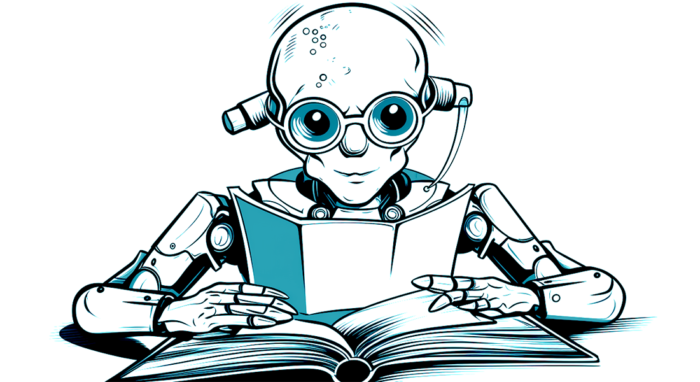What is ChatGPT, OpenAI & the other AI tools?
AI – large language models (LLM) have been making waves especially since Open AI released ChatGPT for general use in november 2022. Anyone can create an account and try ChatGPT and it is not the only AI tool or LLM out there. ChatGPT quickly became popular on a global scale due to its natural language and ability to write coherent and (mostly) meaningful text, which has also led to controversy in the education sector as students and teachers are already experimenting with it for research work, assignments, exams, etc.
A large language model is not ‘thinking’ or looking up facts, it is only able to construct language: The user can prompt it (ask it questions) and the model will come up with a new answer on the spot. In simple terms the AI is guessing what the statistically most likely next word should be in the sentence it is constructing.
To not sound too machine-like and boring it has a ‘temperature setting’, so it picks out maybe the 3. most likely word or expression. This sometimes makes it sound almost human in its answers. But it is simply trained to generate words based on a given input, it does not have the ability to truly comprehend the meaning behind those words – nor is it sticking to the truth or describing reality.
This means that any responses it generates are likely to be shallow and lacking in depth and insight.
In other words the AI only knows language and how to make up sentences, it does not know; what it is writing, the world, and what is true or not – it is just making up language.
So what does this mean for education?

The challenges and possibilities for teaching
AI is a new technology, not just a new application of existing technology, and this means it has the potential to bring about a technological shift not unlike the birth of the internet or how smartphones changed our lives. It is likely to have a great impact in the years to come, even if no one is sure exactly how this will play out and affect us all.
AI is not just the much talked about stand alone chatbots like ChatGPT, Bard etc. AI is already a part (or currently being built into) all the common digital tools like Office 365, smartphones, search engines, translation tools etc. So there is no option for anyone to opt out or ‘just ban AI’ – we will all need to adapt to this new technology.
For education there are implications both in the short and long term. UCPH has taken the initial approach to ban the use in exams, but is open to opening up to the potential of using chatbots in the future – keep up with the current UCPH policies here (only for UCPH users).
Exam questions & cheating
Short term there is the obvious challenge, that ChatGPT can write a passable exam answer in many topics: It can summarize, answer essay questions, write code etc. and also produce meta explanations of why it chose to code or answer the way it did. It can write in different genres, at different difficulty levels depending on how you prompt it.
Traditional plagiarism detectors will not help, as they look for text matches, and ChatGPT creates a new text every time it writes. Tools are being developed to try to detect AI written texts, but they are not very accurate, and it is dubious that control mechanisms will be able to keep up with the speed of technological advancement, so control may not be the answer. Universities will possibly have to adapt exams and question types in the coming years.
More about approaches to handling chatGPT in Education from UCPH here (only for UCPH user).
How do we teach for a future (or present) where AI is available to all?
In the longer term, the quality of the AI output raises questions of how and what the universities should teach to prepare students to work in a future, where AI may be a collaborative partner in the work place.
This raises the question; How we can use the AI tools constructively in teaching, if we agree that this is a tool that students should know how to use and know the limitations of.
In the even longer perspective there may be more profound questions to answer: What should the university teach for living and working in a world where AI is prevalent? What do students need to know and what kind of skills and competencies should the university teach?
For now the UCPH has defined a model for student’s digital literacy, which you can read more about here (only for UCPH) and find resources in this Absalon room (only for teachers at UCPH – English version coming soon) – there is more about AI in the module Technological Understanding (only accessible for UCPH teachers).
Ethics & challenges
AI brings along it’s own set of problems regarding bias (gender, race etc.), privacy, copyright, climate impact, lack of fact checking/hallucinations, the business models and companies making the AIs, access, ownership, traceability etc. Read more about the challenges and risks here (only UCPH users).

